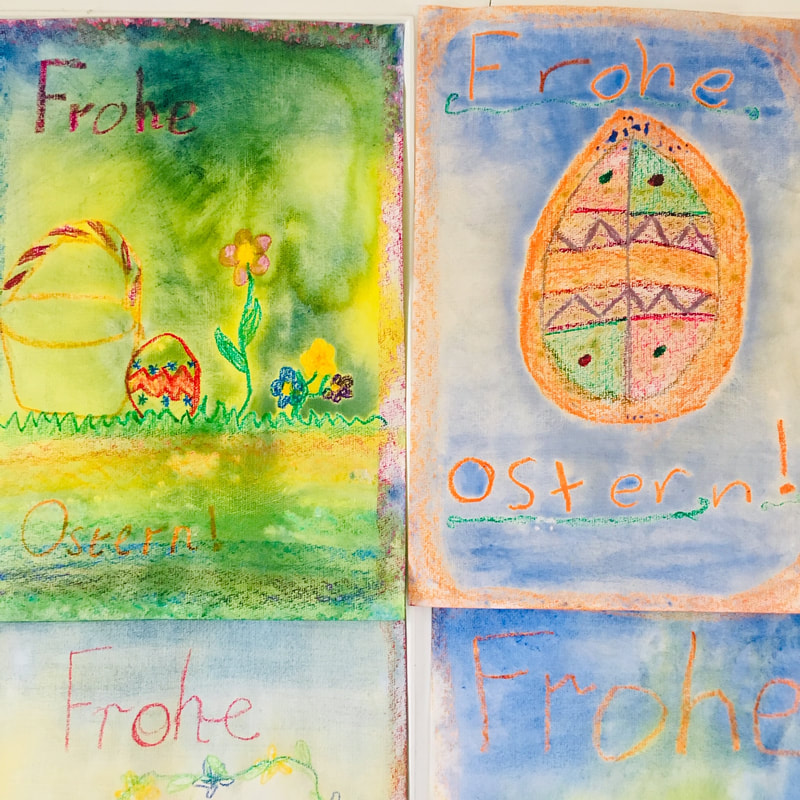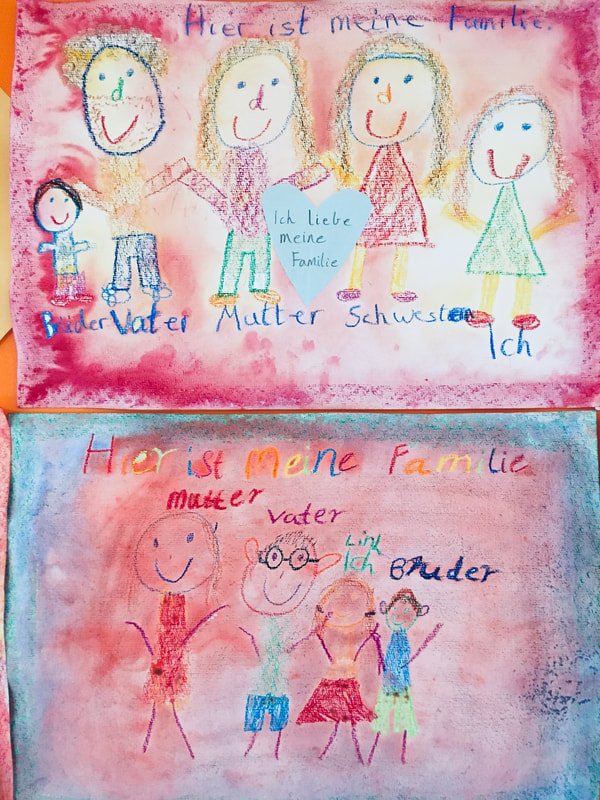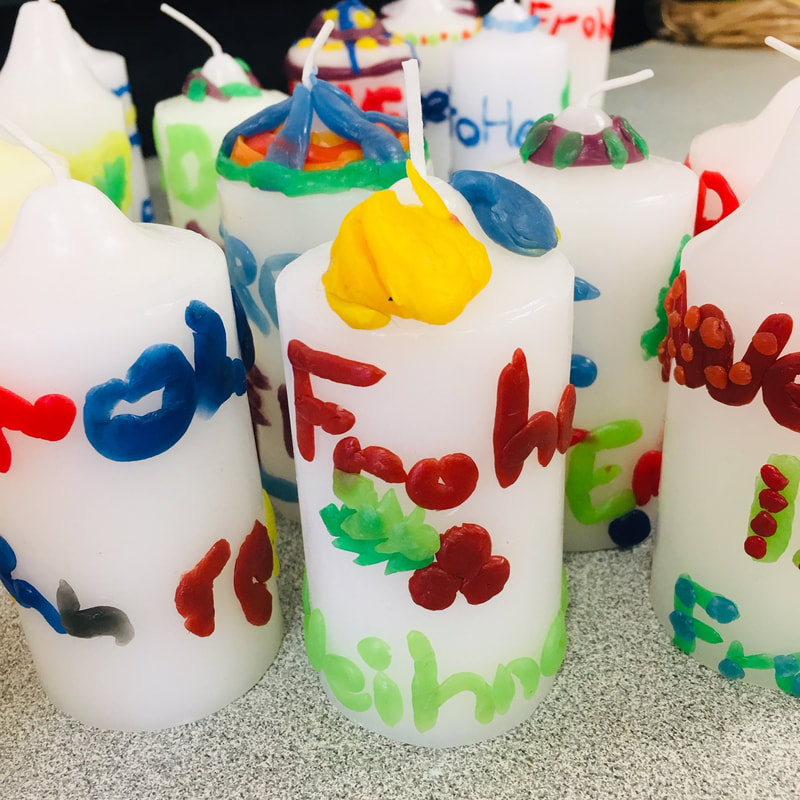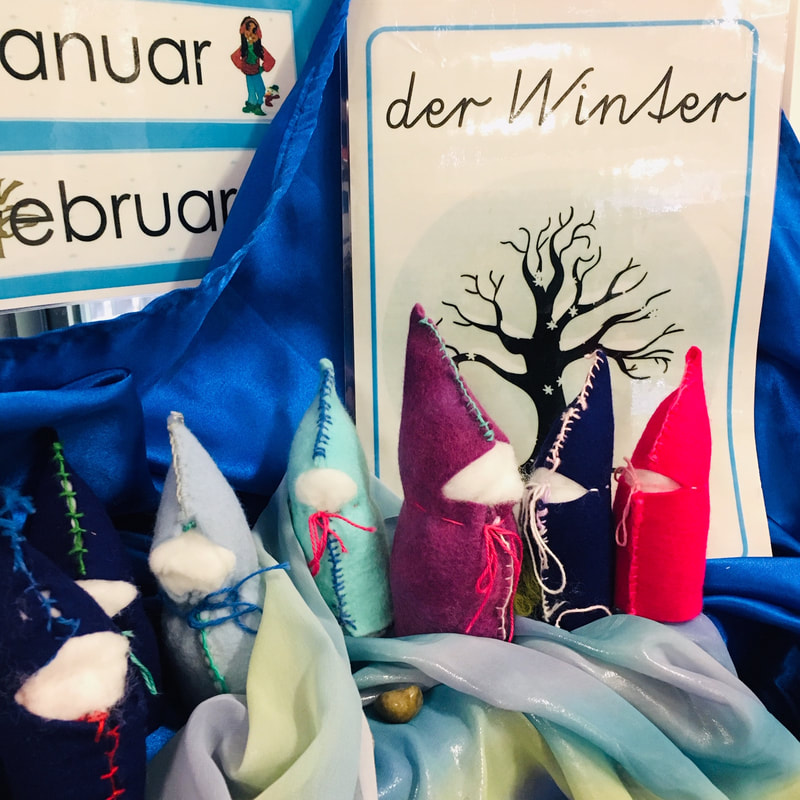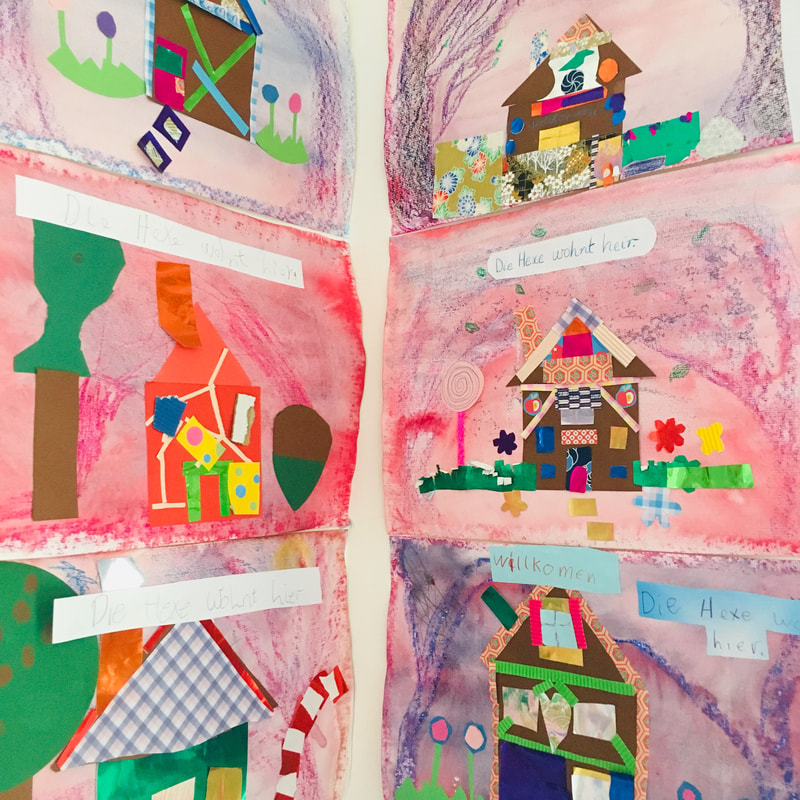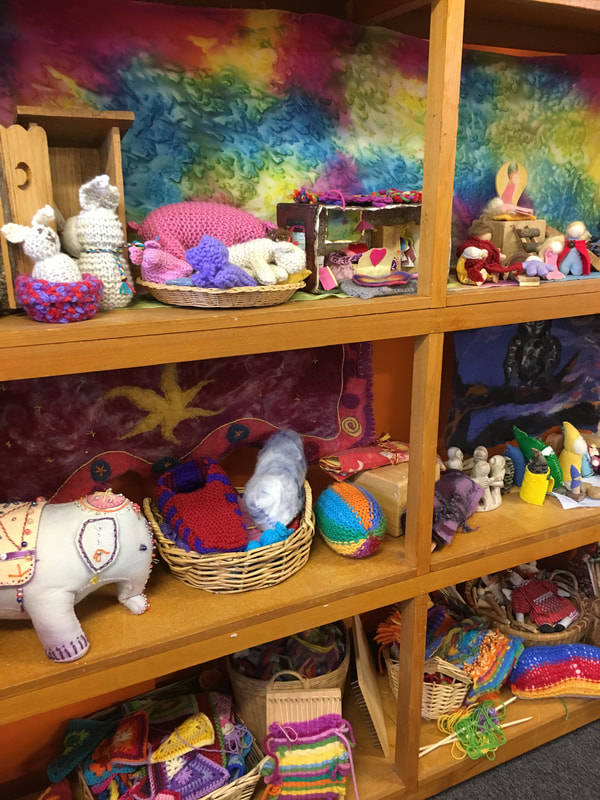German
LOTE - German
All lessons and learning objectives come from the scope and sequence of the Victorian Curriculum, however where possible, any Steiner themes that allow for integration are also incorporated, which help in with keeping to the Steiner/State Curriculum approach that our school offers. The following is a summary that Catherine Menyhart has written as a document that will begin the process of articulating what Steiner Inspired means at our school.
Specifically, Catherine teaches as much as possible to the Steiner Class related themes, or epochs as they’re known by. The children all attend a one hour lesson with Catherine.
Prep/Class1: Fairy tales
These are taught through songs, art activities (with focus on learning German vocabulary/grammar within the theme) drama/plays, puppetry, dance and finger plays.
For example, Catherine would begin the fairy tale of Red Riding Hood, by introducing the major characters in German. Retell story many times, each time introducing new vocab which teaches common words, go eat, drink, body parts, colours, family names etc. Afterwards, children colour in the characters, reassemble of jigsaw puzzle, or interact kinaesthetically to certain language “Klopfte an die Tuer“ (knocked on the door) during retelling. Catherine retells the story through felt puppets (the children help with placement) then finally they enact the play sometimes using German phrasing and with me as a narrator.
Catherine covers the stories of Red Riding Hood, Three Little Pigs, Hansel and Gretel and Musicians of Bremen as “Fairytale” units of work over the 2 years, interspersed with other main stream literature for eg. The Hungry Caterpillar etc.
Class2: Animal /pets
Mostly Class 2 continues with the Me and My Family focus for Early Childhood LOTE learning. Catherine also introduces the German alphabet formally through an illustrated handmade ABC book, with focus on phonics (great for English comparison and reinforcement of sound/letters and handwriting). The Steiner theme is Celtic and with a strong animal element so Catherine also tell stories using Aesop’s Fables, and does a unit of work on Pets. Again, art and illustration is catered for (pictorial learning is a must in Steiner primary school) with singing and verses too.
Class3: House and Home
The Steiner theme for Class 3 centres around Jewish culture where Christian (moral) laws are explored. Class three deals in systems and structures (social and physical/nature world) and how man responds to and interacts with his environment in harmony: hence the Shelter/ building/farming themes.
Catherine re- introduces Hansel and Gretel, by teaching a traditional German folk song (3 verses). The children learn vocabulary for geometrical shapes, make 3D houses from nets of cubes and triangular prisms (These are meant to be Gingerbread Houses) and illustrate in mixed media the song. They weave a small wall hanging of a house, using triangle,square, rectangles as well as procedural words for over, under, cut, the colours etc. during their weaving activity. (Weaving is a structural based craft and good for the Steiner theme for this class.) Children learn the names for furniture and rooms and their different functions (according to man’s needs), explain where they live, how. They also learn the names of clothing.
Class4: Nordic Epoch
Catherine tries to relate this feisty era through learning about weather, months, seasons, and time (basic o’clocks, half and quarters) and birthdays. The children learn about cultural calendar year of Germany and focus on Fasching, a huge event in Germany. Adverbs of time (today, yesterday tomorrow, now, later etc) The children revisit clothing and relate it to the weather. The children learn the traditional folk song of the seasons and sing it in rounds and they write an individual poem about weather (some choose extreme) in the German poetic structure called Elfchen, and they do an art activity focused on this.
Class 5: Foods
Here Catherine “Fills in the gaps” and refers to the Victorian curriculum. We revise all that is learnt and interact with online language games from DET Languages Online as practise/revision sessions. Children do maths lessons entirely in German using single/double/triple digit calculations to ground their German number knowledge. They fill out cross word puzzles and make a comic for conversational practise.
In Class 5 the children learn about Foods of Germany and mealtimes. Children learn the traditional song “Sag Mutter” where each day, over a week 21 new foods are introduced. They take notes while viewing a DVD on regional foods of Germany and write a report about it. They experience a German Breakfast and taste foods that are particular to Germany- this is done with parent help. The children cook pancakes, following procedural text in German (and compare this to English textype) and they also learn to sing Backe Backe Kuchen, a folk song.
Class 6: Steiner Craft
As above: Catherine “Fills in the gaps” and refers to the Victorian curriculum. The children revise all that is learnt and interact with online language games from DET Languages Online as practise/revision sessions. Children do maths lessons entirely in German using single/double/triple digit calculations to ground their German number knowledge (really tests them!) They fill out cross word puzzle from various previous themes, play jeopardy like games in teams to answer specific questions of vocab grammar and culture learnt so far. The children create a profile of themselves in poster format. Catherine is hoping to work with children to develop a pen pal program with students from another school.
Buddy system in BHPS lends itself to enacting a cultural event of Germany. Children learn about school system in Germany, making comparisons. They make a Schultuete, a parcel of goodies to their Prep buddies. In Germany, this is done by parents and given on the first day of school. To incorporate Steiner Craft, children make dolls, puppets, pouches, and felt gnomes using textile skills, as well as making notebooks and welcome/greeting cards using water colour paints. They present these to their buddies, in collaborations with the Prep Teachers. Class6 teachers also help out with these craft sessions in their own classes and with presentations. The children often come in at lunchtimes for craft time too when Catherine sits with them to help out.
The major enquiry for Class 6 is to research a famous German inventor, through whole class research. Catherine chooses one herself and models a report text type and format to the whole class, then children then choose their own famous German to research. It’s an individual project so they can choose from famous inventors, sports stars, musicians/artists, which they then present.
All lessons and learning objectives come from the scope and sequence of the Victorian Curriculum, however where possible, any Steiner themes that allow for integration are also incorporated, which help in with keeping to the Steiner/State Curriculum approach that our school offers. The following is a summary that Catherine Menyhart has written as a document that will begin the process of articulating what Steiner Inspired means at our school.
Specifically, Catherine teaches as much as possible to the Steiner Class related themes, or epochs as they’re known by. The children all attend a one hour lesson with Catherine.
Prep/Class1: Fairy tales
These are taught through songs, art activities (with focus on learning German vocabulary/grammar within the theme) drama/plays, puppetry, dance and finger plays.
For example, Catherine would begin the fairy tale of Red Riding Hood, by introducing the major characters in German. Retell story many times, each time introducing new vocab which teaches common words, go eat, drink, body parts, colours, family names etc. Afterwards, children colour in the characters, reassemble of jigsaw puzzle, or interact kinaesthetically to certain language “Klopfte an die Tuer“ (knocked on the door) during retelling. Catherine retells the story through felt puppets (the children help with placement) then finally they enact the play sometimes using German phrasing and with me as a narrator.
Catherine covers the stories of Red Riding Hood, Three Little Pigs, Hansel and Gretel and Musicians of Bremen as “Fairytale” units of work over the 2 years, interspersed with other main stream literature for eg. The Hungry Caterpillar etc.
Class2: Animal /pets
Mostly Class 2 continues with the Me and My Family focus for Early Childhood LOTE learning. Catherine also introduces the German alphabet formally through an illustrated handmade ABC book, with focus on phonics (great for English comparison and reinforcement of sound/letters and handwriting). The Steiner theme is Celtic and with a strong animal element so Catherine also tell stories using Aesop’s Fables, and does a unit of work on Pets. Again, art and illustration is catered for (pictorial learning is a must in Steiner primary school) with singing and verses too.
Class3: House and Home
The Steiner theme for Class 3 centres around Jewish culture where Christian (moral) laws are explored. Class three deals in systems and structures (social and physical/nature world) and how man responds to and interacts with his environment in harmony: hence the Shelter/ building/farming themes.
Catherine re- introduces Hansel and Gretel, by teaching a traditional German folk song (3 verses). The children learn vocabulary for geometrical shapes, make 3D houses from nets of cubes and triangular prisms (These are meant to be Gingerbread Houses) and illustrate in mixed media the song. They weave a small wall hanging of a house, using triangle,square, rectangles as well as procedural words for over, under, cut, the colours etc. during their weaving activity. (Weaving is a structural based craft and good for the Steiner theme for this class.) Children learn the names for furniture and rooms and their different functions (according to man’s needs), explain where they live, how. They also learn the names of clothing.
Class4: Nordic Epoch
Catherine tries to relate this feisty era through learning about weather, months, seasons, and time (basic o’clocks, half and quarters) and birthdays. The children learn about cultural calendar year of Germany and focus on Fasching, a huge event in Germany. Adverbs of time (today, yesterday tomorrow, now, later etc) The children revisit clothing and relate it to the weather. The children learn the traditional folk song of the seasons and sing it in rounds and they write an individual poem about weather (some choose extreme) in the German poetic structure called Elfchen, and they do an art activity focused on this.
Class 5: Foods
Here Catherine “Fills in the gaps” and refers to the Victorian curriculum. We revise all that is learnt and interact with online language games from DET Languages Online as practise/revision sessions. Children do maths lessons entirely in German using single/double/triple digit calculations to ground their German number knowledge. They fill out cross word puzzles and make a comic for conversational practise.
In Class 5 the children learn about Foods of Germany and mealtimes. Children learn the traditional song “Sag Mutter” where each day, over a week 21 new foods are introduced. They take notes while viewing a DVD on regional foods of Germany and write a report about it. They experience a German Breakfast and taste foods that are particular to Germany- this is done with parent help. The children cook pancakes, following procedural text in German (and compare this to English textype) and they also learn to sing Backe Backe Kuchen, a folk song.
Class 6: Steiner Craft
As above: Catherine “Fills in the gaps” and refers to the Victorian curriculum. The children revise all that is learnt and interact with online language games from DET Languages Online as practise/revision sessions. Children do maths lessons entirely in German using single/double/triple digit calculations to ground their German number knowledge (really tests them!) They fill out cross word puzzle from various previous themes, play jeopardy like games in teams to answer specific questions of vocab grammar and culture learnt so far. The children create a profile of themselves in poster format. Catherine is hoping to work with children to develop a pen pal program with students from another school.
Buddy system in BHPS lends itself to enacting a cultural event of Germany. Children learn about school system in Germany, making comparisons. They make a Schultuete, a parcel of goodies to their Prep buddies. In Germany, this is done by parents and given on the first day of school. To incorporate Steiner Craft, children make dolls, puppets, pouches, and felt gnomes using textile skills, as well as making notebooks and welcome/greeting cards using water colour paints. They present these to their buddies, in collaborations with the Prep Teachers. Class6 teachers also help out with these craft sessions in their own classes and with presentations. The children often come in at lunchtimes for craft time too when Catherine sits with them to help out.
The major enquiry for Class 6 is to research a famous German inventor, through whole class research. Catherine chooses one herself and models a report text type and format to the whole class, then children then choose their own famous German to research. It’s an individual project so they can choose from famous inventors, sports stars, musicians/artists, which they then present.
